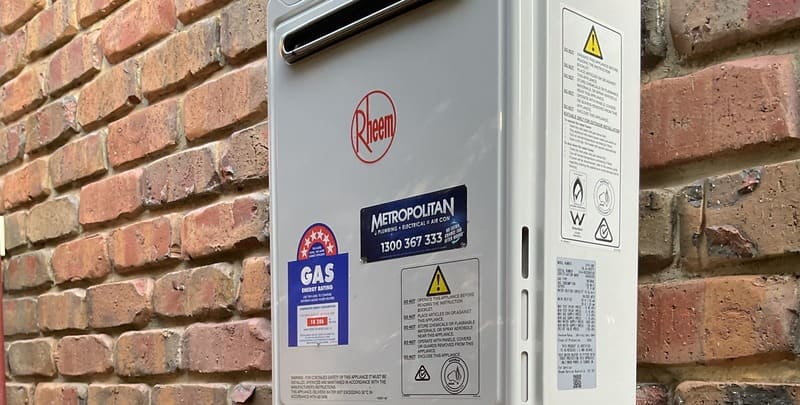Pressure Limiting Valves and Why You Need One
Ever dealt with leaky pipes, noisy plumbing, or constant appliance failures at home? High water pressure might be the silent culprit behind these issues, and that’s where a pressure-limiting valve becomes essential.
Many homeowners underestimate the damage that high water pressure can cause to their plumbing systems, hot water heaters, and other household appliances. Without proper regulation, excessive pressure can lead to leaks, bursts, and costly repairs over time. That’s why pressure-limiting valves are so important — they help protect your home from preventable damage.
What Exactly Is a Pressure Limiting Valve?
A pressure-limiting valve (PLV) is a key device designed to safeguard your home’s plumbing system from the harmful effects of high water pressure. It works by reducing the incoming water pressure to a safe level before it reaches your pipes, fixtures, and appliances.
As water enters your home, the valve ensures the maximum static pressure doesn’t exceed safe limits, preventing leaks, pipe bursts, and unnecessary wear on your plumbing. These valves are typically installed near the main water supply line or water meter and can be adjusted by a licensed plumber to match your home’s specific needs.
Installing a pressure-limiting valve not only helps you meet Australian plumbing standards but also keeps your water pressure under control, which can significantly extend the lifespan of your plumbing and appliances.
Signs You Might Need a Pressure Limiting Valve
If you’re experiencing frequent plumbing issues, a pressure-limiting valve could be the solution. Here are some common signs that indicate you may need one:
- Noise from your pipes, such as loud banging or rattling — often referred to as “water hammer.â€
- Frequent leaks or even small bursts in your plumbing system.
- Your hot water system or other appliances showing signs of stress or breaking down prematurely.
- Increased maintenance needs for your water meter or other plumbing fixtures.
- Water pressure that exceeds the recommended limit of 500 kilopascals in Australia.
If you notice any of these symptoms, installing a PLV can help prevent further damage and save you money on future repairs.

How PLVs Protect Your Hot Water System and Appliances
High water pressure can put a lot of strain on your hot water system and other household appliances like dishwashers and washing machines. Over time, this pressure can lead to premature wear and failure of these devices.
A pressure-limiting valve helps reduce this risk by keeping the water pressure within a safe range. This not only protects your plumbing but also extends the life of your appliances and hot water system. It’s a simple yet effective way to avoid expensive repairs and maintain the efficiency of your home’s systems.
Why You Should Hire a Professional for Installation
While it might seem tempting to install a pressure-limiting valve yourself, it’s best left to a licensed plumber. They have the expertise to assess your plumbing system and determine the best location for the valve — usually near the main water supply or water meter.
A professional will ensure the valve is set to the correct pressure range, protecting your home from potential damage caused by high pressure. Plus, they’ll make sure the installation meets all relevant Australian standards, giving you peace of mind that everything is done safely and correctly.
Hiring a qualified plumber helps you avoid mistakes and keeps your plumbing system running smoothly for years to come.
Common Myths About Pressure Limiting Valves
There are several misconceptions about pressure-limiting valves that can confuse homeowners. Let’s clear up a few of them:
- Myth: PLVs reduce water flow. Fact: They only regulate pressure, not the volume of water flowing through your system.
- Myth: All pressure valves are the same. Fact: There are different types, like adjustable and fixed, to suit various pressure requirements.
- Myth: PLVs are only needed in old homes. Fact: Even new homes can experience high water pressure, making PLVs just as important today as ever.
Understanding the truth about pressure-limiting valves can help you make better decisions for your home’s plumbing system.
Take Action to Protect Your Home
Installing a pressure-limiting valve is a simple but crucial step in protecting your home from the damaging effects of high water pressure. By controlling the incoming water pressure, these valves help prevent leaks, bursts, and unnecessary wear on your plumbing and appliances.
With the added benefit of meeting Australian standards, a pressure-limiting valve ensures your water pressure stays within a safe range, reduces stress on your pipes, and extends the life of your fixtures. Don’t wait — get your plumber to install one today and enjoy long-term protection and peace of mind.
Please note: This information is for general advice only. Regulations may vary by state, so always consult local authorities or a professional before proceeding. See our Terms & Conditions here.
The non-standard flange is also called custom flange,it means the flange is not as per the international standard of flanges. Commonly it is designed for special application.
Non-Standard Flange,Non Standard Flange,Non-Standard Stainless Steel Flange,Non-Standard Flange Customization
Fuyuan Marine Accessories Co., Ltd , https://www.fymarineparts.com